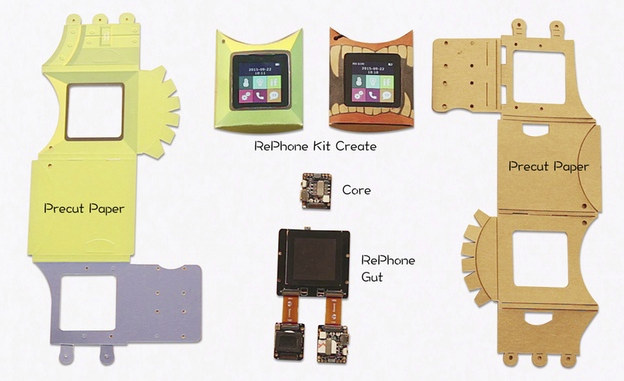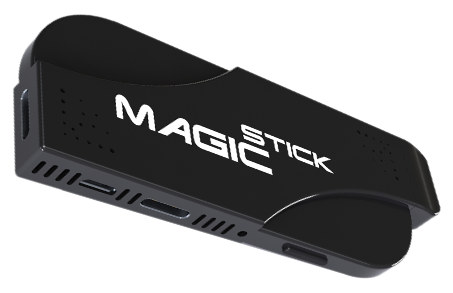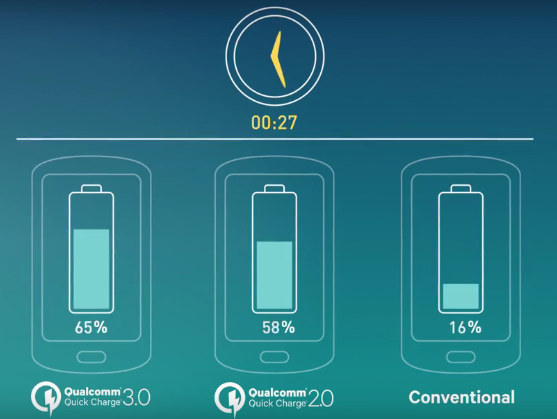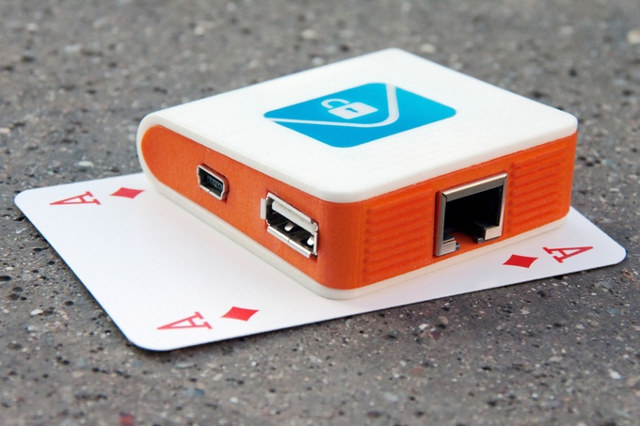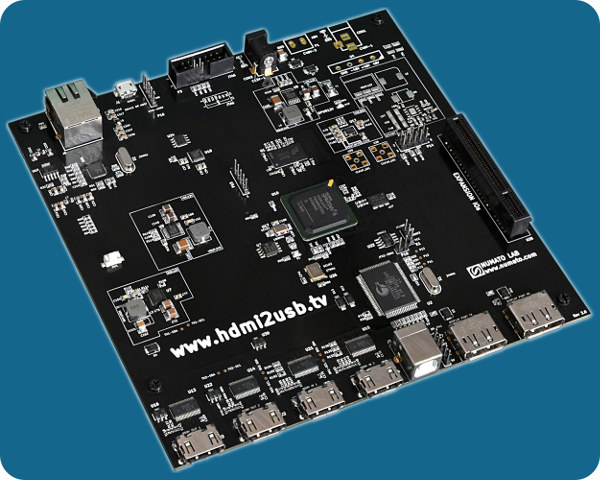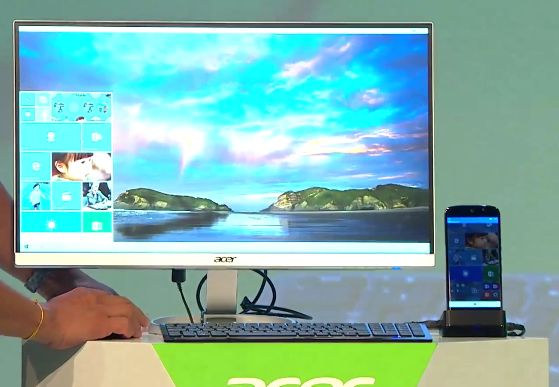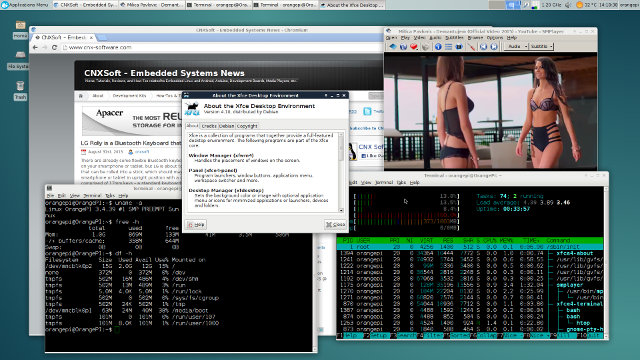Seeed Studio has design a modular and open source phone it calls RePhone Kit Create. The kit allows you, or/and your kid(s), to assemble their own phone based on building blocks including a 2G or 3G core module, a touchscreen display module, an audio module, and pre-cut, seawable, washable, and easily drawable Kraft paper to make the case. The kit can also be used for IoT applications using cellular and Bluetooth connectivity, and extra Xadow modules GPS, NFC, motion sensors, camera and more.. Two cellular “core” module can be used: RePhone GSM + BLE module with the “world’s smallest System-on-Chip (SOC) for Wearables and Internet Of Things”, GSM, GPRS and Bluetooth 2.1 and 4.0 support. RePhone Core Module 3G with a “powerful microcontroller”,a standard Xadow interface (USB, GPIO, I2C, SPI, UART, EINT), support for speaker, two microphones and a headset, a Nano SIM, and support for HSPA/WCDMA:850/1900 and GPRS/EDGE:850/1900. Voltage: […]
MagicStick TV Sticks Powered by Intel Atom x5 or x7 Processors Feature up to 8GB RAM, HDMI 2.0, 802.11ac… (Crowdfunding)
Several Cherry Trail Atom x5 MegooPad TV sticks are on the way, but they mostly have similar specs to the previous generation Bay Trail sticks, except with a slightly faster processor, and in some models, USB 3.0 support. An Indian company is currently developing some Cherry Trail TV sticks with impressive specifications including processors such as Intel Atom x7-Z8700, up to 8GB RAM, up to 64GB storage, 802.11ac connections, HDMI 2.0, and USB 3.1 type-C connector. These products are called MagicSticks, and three models will soon be available. [Update 30/9/2015: The indiegogo campaign is up, but the Wave is not shown, and instead MagicStick Power has been renamed to Wave, changes are reflected in the table below] MagicStick One MagicStick Wave MagicStick Power Wave Processor Intel Atom x5-Z8300 processor up to 1.83 GHz, with 12 core Gen8 GPU Intel Atom x5-Z8500 processor up to 2.24 GHz, with 12 core Gen8 […]
Qualcomm Quick Charge 3.0 Promises to Charge Phones About 3x Faster Than Conventional Devices
Qualcomm has recently announced the latest version of its Quick Charge technology that allows to charge supported smartphones much faster than typical smartphones using a 5V charger. The company claims that Quick Charge 3.0 enabled smartphones can typicallly charge from zero to 80 percent in about 35 minutes compared to almost 90 minutes with conventional devices. Quick Charge 3.0 adds support for Intelligent Negotiation for Optimum Voltage (INOV), a new algorithm developed by Qualcomm Technologies that allows mobile devices to request optimal power transfer (3.6V to 20V in 200mV increments), while maximizing efficiency, which – together with other improvements – increases power efficient by 38% compared to Quick Charge 2.0, and allows charging the device twice as fast as possible with Quick Charge 1.0. That means the voltage and amperage will change during charging between 3.6V to 20V by 200mV increments, instead of 5V, 9V, 12V, and 20V for QC […]
Own-Mailbox is a Tiny, Secure, and Open Source Hardware Mail Server (Crowdfunding)
Email encryption has been around for a while, but virtually nobody uses it, because it’s quite complex to setup, and your recipients email clients, apps or browsers must also support encryption. Revolutek aims to simplify the setup and usage of encrypted email with their “Own-Mailbox” based on open source hardware and software technology. The hardware solution could have been based on the Raspberry Pi board in theory, but the popular board requires a closed source binary to boot, documentation about part of the hardware is lacking, and once the enclosure, and required accessories are included the price would have been higher. So instead they decided to design their own hardware based on an Allwinner processor: SoC – Allwinner A13 Cortex A8 processor @ 1GHz System Memory – 256 MB RAM Storage – (micro?) SD card slot with 16GB card included Connectivity – 10/100M Ethernet (Lan9500A controller) USB – USB host […]
Numato Opsis is an Open Source Hardware FPGA Board with 6 Video Inputs and Outputs (Crowdfunding)
Numato Lab is a Bangalore based company specializing in MCU and FPGA boards such as the low cost Mimas V2 Spartan 6 board, and their latest board is also based on a Spartan 6 FPGA, but a more powerful part with LX45T FPGA, and targets video applications with two HDMI inputs, two HDMI outputs, one DisplayPort output, and one DisplayPort input, among other interfaces. Instead of simply listing specifications of Numato Opsis, I’ll reproduce a table – drawn by Numato – showing Opsis features and specifications against some other FPGA video platforms. Opsis miniSpartan6+ Mixxeo Atlys Nexys Anvyl CVK 2.0 AVDB Make Numato ScarabHardware M‑Labs Digilent Digilent Digilent TED OmniTek License Open Open Open Closed Closed Closed Closed Closed Cost USD $349 USD $105 no stock USD $419 USD $499 USD $539 USD $2,995 USD $999 FPGA Fab Xilinx Xilinx Xilinx Xilinx Xilinx Xilinx Xilinx Altera Family Spartan‑6 Spartan‑6 Spartan‑6 Spartan‑6 Artix‑7 Spartan‑6 Spartan‑6 Cyclone V Part LX45T […]
Acer Jade Primo is the First Smartphone PC Running Windows 10 Continuum
At least two operating systems companies are working on mobile desktop converge: Microsoft with Windows 10 Continuum and Canonical with Ubuntu, Mir and Unity 8. There are still software and hardware challenges ahead, but I envision that in a couple of years my smartphone will also be my Ubuntu powered computer. But so far it looks like Microsoft might be ahead, as jointly with Acer they announced and demo Windows 10 Continuum on Jade Primo smartphone. The smartphone itself is powered by a Qualcomm Snapdragon 808 processor, with a 5.5″ AMOLED display, and 21MP & 8 MP cameras. I could not find details about RAM and storage. When the phone is connected to a dock via its micro USB to HDMI (MHL) cable, it pairs with Bluetooth mouse and keyboard, and you can simply use Windows 10 just like on a real computer running Office, browsing the web and so […]
Debian 8 on Orange Pi mini 2 Board (Video)
Yesterday, I wrote a quick start guide for Orange Pi PC / 2 / Plus showing how to install Linux distributions on the board, and build your own image. With the launch of the $15 Orange Pi PC, Xunlong Software has taken over 1,500 orders for the board on their Aliexpress store, and probably sold a few hundreds or thousands in China via Taobao. So the board got relatively popular in a short time, considering it’s only selling via these two channels. I tested my tutorial with Orange Pi mini 2 ($23), a very similar board also based on Allwinner H3, but just a little larger and with an extra USB hosty port, but apart from that it’s similar to Orange Pi PC, and software compatible. I had already wrote about my test results in the previous article, where I did not recommend using the board in Linux as a […]
Study Shows Octa Core Processors Bring Little Over Quad Core Processors in Mobile Devices
Silicon vendor are now launching 8-core and even 12-core processors for mobile devices, and I can see some advantages in terms of power consumption in processors leveraging big.LITTLE processing with low power ‘LITTLE’ cores running light tasks such as audio or video playback, while performance ‘big’ cores running much demanding tasks. However, some processors, such as RK3368, feature the same eight cores, and in real-use don’t bring that extra bit of performance or lower power consumption, except in very specific cases. So the only “advantage” of this type of processor is a marketing one, with keyword like “Octa-core”, “64-bit”, etc… Last year, I found out, that more powerful cores may be more important than many cores, when I tested Allwinner A80 processor with PVRMonitor to check CPU usage per core in real-time, and in Antutu, while Browsing the web or playing games, only a few cores were used most of […]


